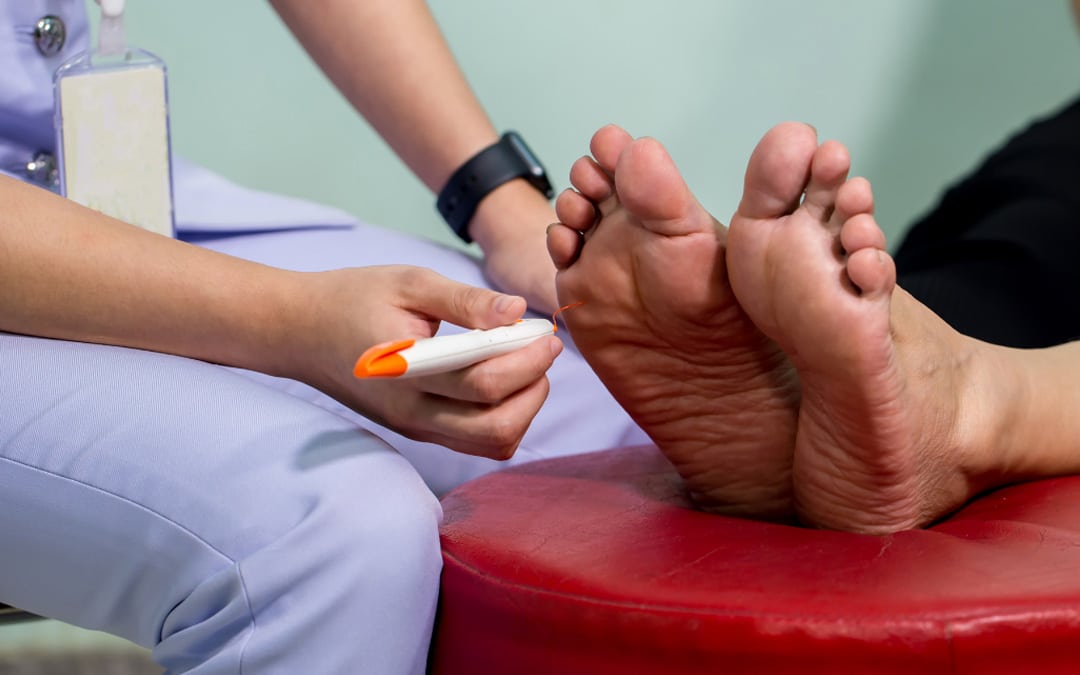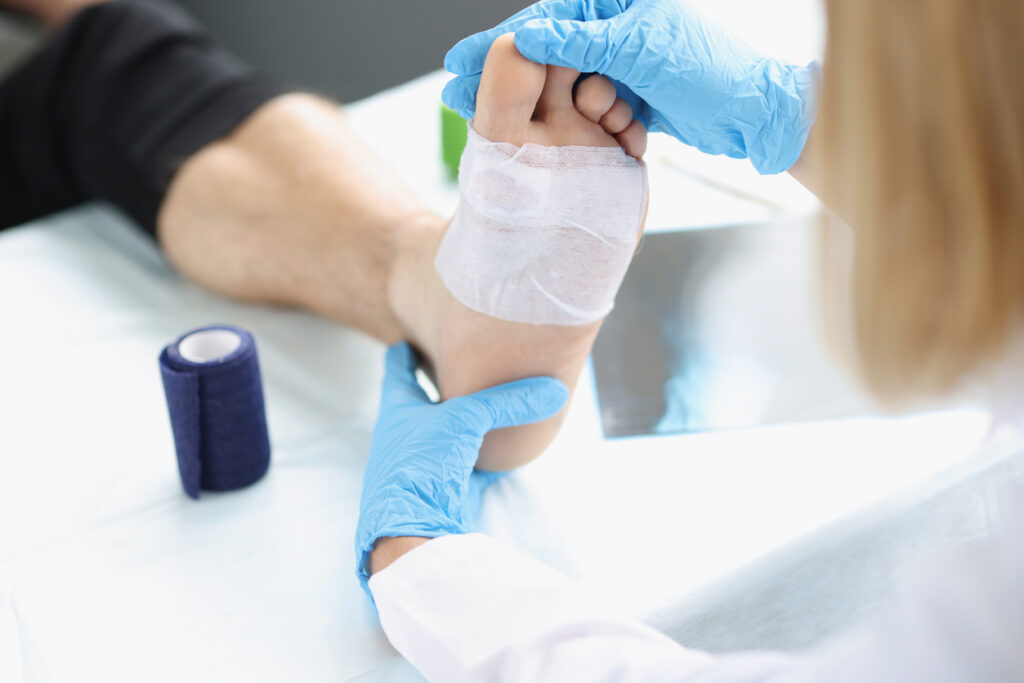The wound frequently represents more challenging underlying illnesses and comorbidities. People who suffer from chronic wounds typically have far higher levels of sharpness than patients who don’t have nonhealing wounds. For example, people with diabetes develop a diabetic foot ulcer, an open sore or wound frequently at the bottom of your foot. Of those who acquire a foot ulcer, 20% end up in the hospital due to an infection or another ulcer-related problem.
Podiatrists are designated for managing wounds, and they are the first to recognize the development of a limb-threatening wound in progress or already present. Podiatrists have made a variety of contributions to the growing and developing field of wound management, which have supplied crucial evidence favoring successful wound therapy against amputation. Podiatric experience is essential to the recovery of diabetic, neuropathic, and other types of foot ulcers.

Dr. Sima Soltani is a foot and ankle specialist Orange County that helps patients with wound care management. Her first attempt is to treat a wound or diabetic foot ulcer with medication before thinking about amputation. With more than 20 years of experience, she is the most reliable podiatrist in the podiatry clinic in Irvine. With the latest technology and advanced medication, she has treated thousands of patients till now.
However, only a podiatrist cannot help in wound management unless the patient also takes an initiative. Mentioned below are some of the tips to be taken during a diabetic foot wound.
Healing Diabetic Wounds 
Controlling Blood Sugar Level
Needless to say, all diabetic problems start when a person has a high blood sugar level. Thus, take diabetic medications, and follow a healthy routine by including a few mild exercises and walking along with a healthy food diet. Keep a watch on your blood sugar level by monitoring it regularly through a glucometer.
Reduce Weight on Foot
Most diabetes ulcers or wounds form in/between/on the toes or the sole. The affected leg should be elevated and, as the wound heals it should be covered with a cast or fitted with diabetic boots. These treatments relieve the ulcer from excess pressure.
Enhance Peripheral Circulation

Your wound care Orange County podiatrist will assess your feet’s blood flow by completing specific tests. This quick examination reveals to the podiatrist whether and to what extent you have vascular obstructions. To improve blood flow, some people require a consultation with a vascular specialist or cardiologist.
Symptoms
Look around for any open wounds when you, a loved one, or a friend evaluate your feet. Even a little one should be taken care of right away, especially in diabetic patients. Your podiatrist should be contacted right once if there is yellow, foul-smelling drainage, swelling, discomfort, redness, or red streaking.
Prevention
It is commonly said, prevention is better than cure. Always inspect our feet for small wounds. The moment you examine something unusual start treating it. If you don’t know how to handle it, simply visit an Orange County wound care clinic nearby.

A smaller wound is considerably simpler to treat and heal than a larger one, which may result in pain, discomfort, infection, scarring, and limb loss.
- Wash your feet every day in hot, soapy water, and completely dry them—especially between your toes.
- Check your feet for any bruising, pressure points, corns, calluses, cuts, or other injuries.
- Wear fresh socks every day and change them when you start sweating.
- Put on sturdy, well-fitting footwear. Never go barefoot anywhere, not even indoors.
- Exercise each day as much as you can tolerate without getting exhausted.
- Maintain a healthy weight.
- Don’t consume alcohol and avoid smoking.
- Visit your podiatrist expert at least once every three months for a thorough podiatric examination.
The key to a healthy foot is precautions and prevention. Little care from your end and managing a healthy lifestyle can help you in avoiding too many complications in life. after a certain age, everyone must go for a thorough health checkup.

However, it is also important to not ignore a single spot on your feet if it is disturbing your daily routine.
It’s essential to learn how to inspect your feet so you can identify a “potential” problem as soon as possible. Take off your shoes and socks when you visit a healthcare provider so that your feet can be thoroughly checked. Regardless of how simple they may seem to you any abnormalities should be reported to your podiatrist as soon as possible.

